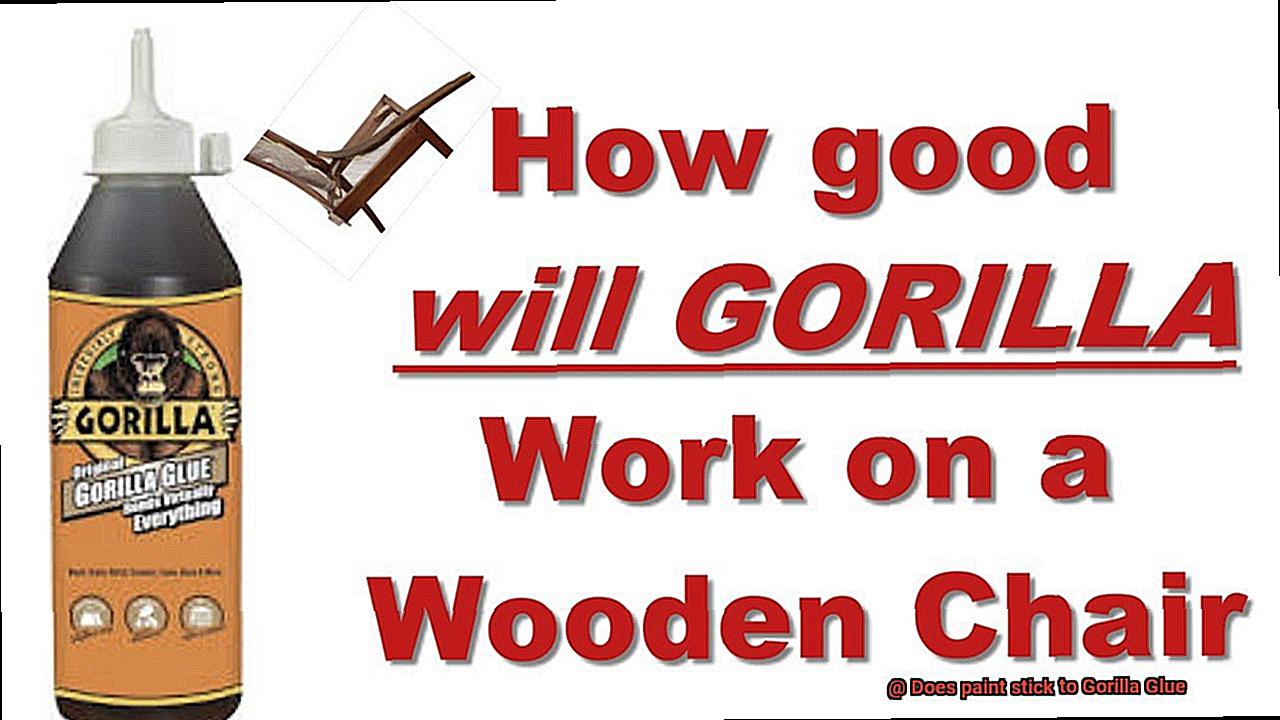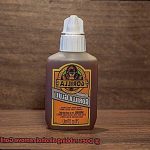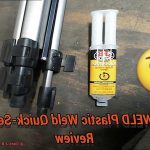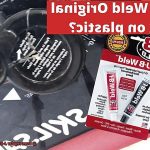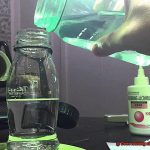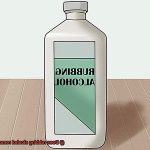Are you gearing up for a DIY project and planning to use Gorilla Glue? If so, you might be wondering if it’s possible to paint over it. Fear not. This article delves into the intriguing question, “Does paint stick to Gorilla Glue?”
Gorilla Glue is renowned for its impressive bonding strength, making it a go-to adhesive for various projects. But when it comes to painting over this glue, things aren’t as simple as they seem.
The reality is that whether or not paint adheres to Gorilla Glue depends on several factors. The type of paint, the surface being painted, and the application technique can all influence how well the paint sticks. Therefore, before you start painting, it’s crucial to understand what you’re dealing with.
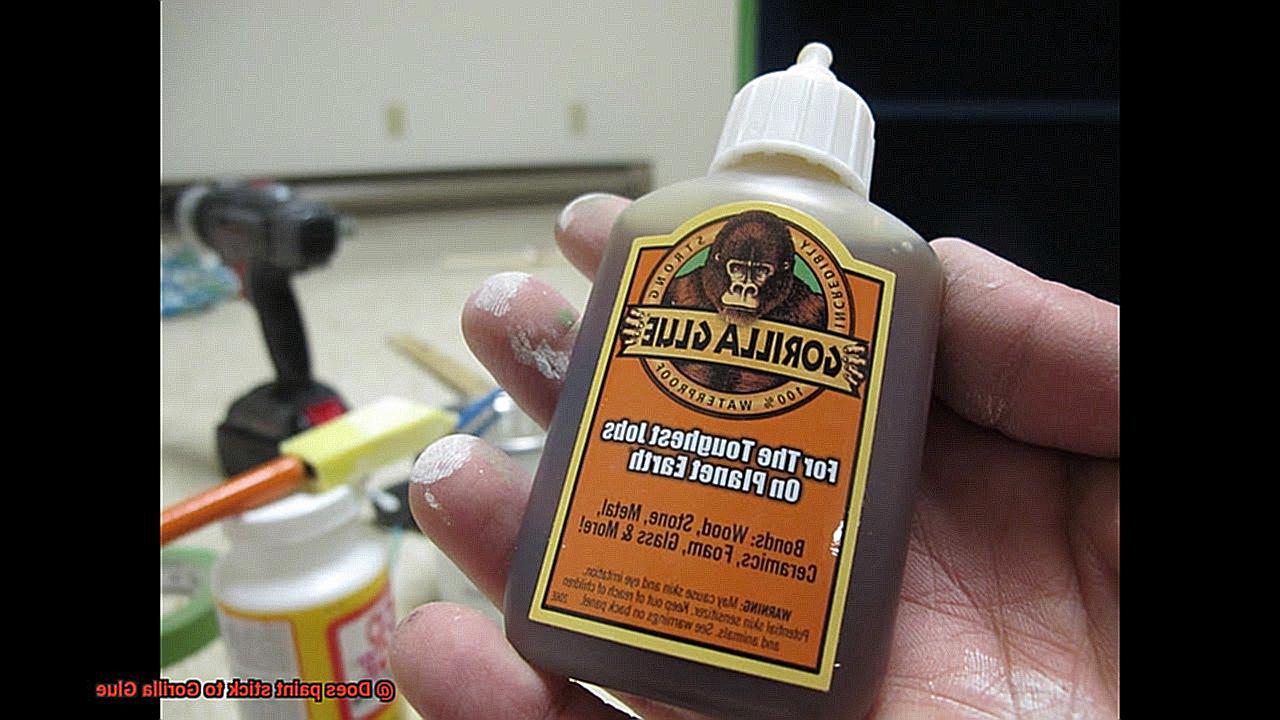
But don’t fret. We’ve got your back. In this article, we’ll take an in-depth look at Gorilla Glue and provide some practical tips on how to successfully paint over it. Whether you’re a seasoned DIYer or just starting out, there’s something valuable here for everyone. So keep reading and discover more about painting over Gorilla Glue.
What is Gorilla Glue?
Contents
- 1 What is Gorilla Glue?
- 2 Does Paint Stick to Gorilla Glue Directly?
- 3 Sanding the Gorilla Glue Before Applying Paint
- 4 Using a Primer Before Painting
- 5 Special Type of Paint for Adhesive Surfaces
- 6 Considerations When Painting Over Gorilla Glue
- 7 Steps for Preparing and Painting Over Gorilla Glue
- 8 Tips for Applying Paint to Gorilla Glue Successfully
- 9 Conclusion
Gorilla Glue is more than just an adhesive; it’s a game-changer in the world of bonding. This polyurethane-based glue has been on the market since 1999 and has earned a reputation for its remarkable strength and versatility.
What sets Gorilla Glue apart from other adhesives is its unusual ability to expand as it sets. This expansion enables the glue to fill gaps or voids in materials, resulting in an even stronger bond. However, users must be careful not to overuse or apply the glue incorrectly, as this can cause problems due to its expanding nature.
This wonder glue works on a wide variety of surfaces, including wood, metal, ceramic, foam, and more. Gorilla Glue is also waterproof and heat-resistant, making it well-suited for outdoor applications and high-temperature environments.
However, one question many people have is whether they can paint over Gorilla Glue. The answer is not straightforward because paint will not stick to the glue directly due to its adhesive properties. But there are techniques that can be used to make paint adhere better, such as sanding the surface of the glue, applying a primer before painting, or using a special type of paint designed for adhesive surfaces.
Does Paint Stick to Gorilla Glue Directly?
While it’s possible, it’s essential to know that polyurethane-based adhesives like Gorilla Glue are notoriously tough to paint over due to their water-resistant properties. But fear not. With the right tips and tricks, you can ensure your paint sticks well for optimal and long-lasting results.
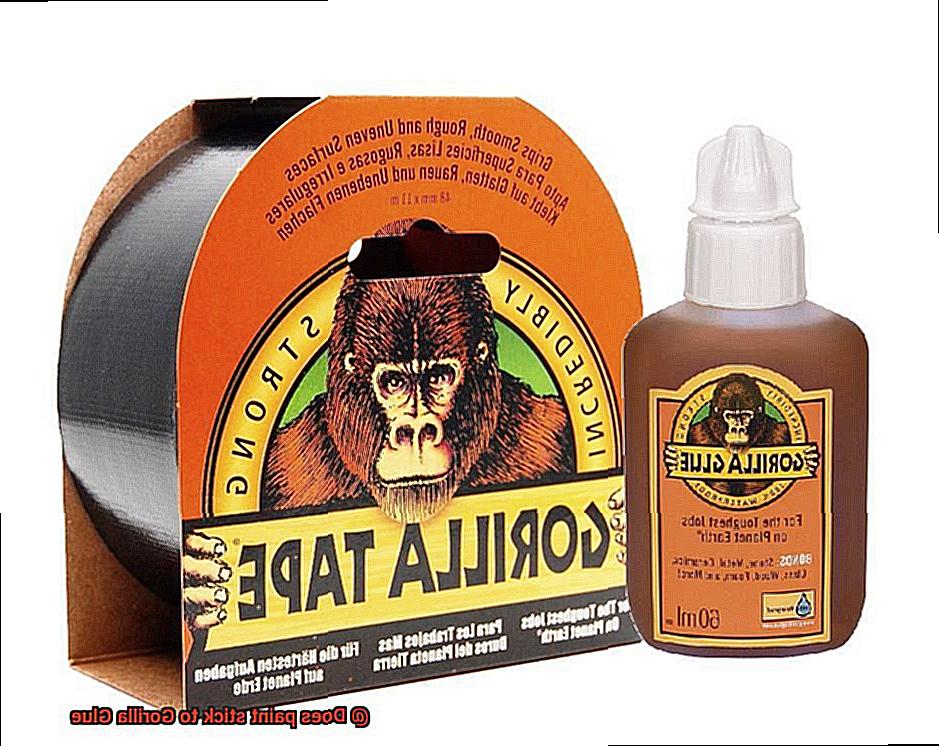
Firstly, Gorilla Glue is an incredibly strong adhesive that dries to a yellowish color that may not be suitable for certain projects. To achieve your desired aesthetic, it may be necessary to paint over the glue. However, traditional water-based paints may not adhere well to the surface of Gorilla Glue.
The solution? Use an oil-based paint or primer. Oil-based paints have a stronger bond with polyurethane-based adhesives and are more resistant to water damage. Using an oil-based primer before painting can also help improve adhesion and prevent chipping or peeling.
But wait, there’s more. Proper surface preparation is crucial for successful adhesion. The Gorilla Glue surface should be clean, dry, and free of any contaminants or debris. Sanding the surface lightly can also help improve adhesion by creating a rougher texture for the paint to grip onto.
To sum up, here are some key takeaways:
- Gorilla Glue is tough to paint over due to its water-resistant properties.
- Oil-based paints or primers are recommended for optimal results.
- Proper surface preparation is crucial for successful adhesion.
- Get creative with your DIY projects knowing that you can achieve both a strong bond and a beautiful finish.
Sanding the Gorilla Glue Before Applying Paint
You’ve spent hours on your DIY project, carefully piecing it together with Gorilla Glue. Now it’s time to add the finishing touch: paint. But before you dive in with your brush, there’s a crucial step you can’t afford to forget: sanding the Gorilla Glue.
Why is sanding so important? Well, Gorilla Glue is known for creating a smooth, glass-like surface once it dries, making it notoriously difficult for paint to adhere to. Sanding the glue before painting helps create a rougher surface that paint can stick to, resulting in a stronger bond and a beautiful finish for your project.
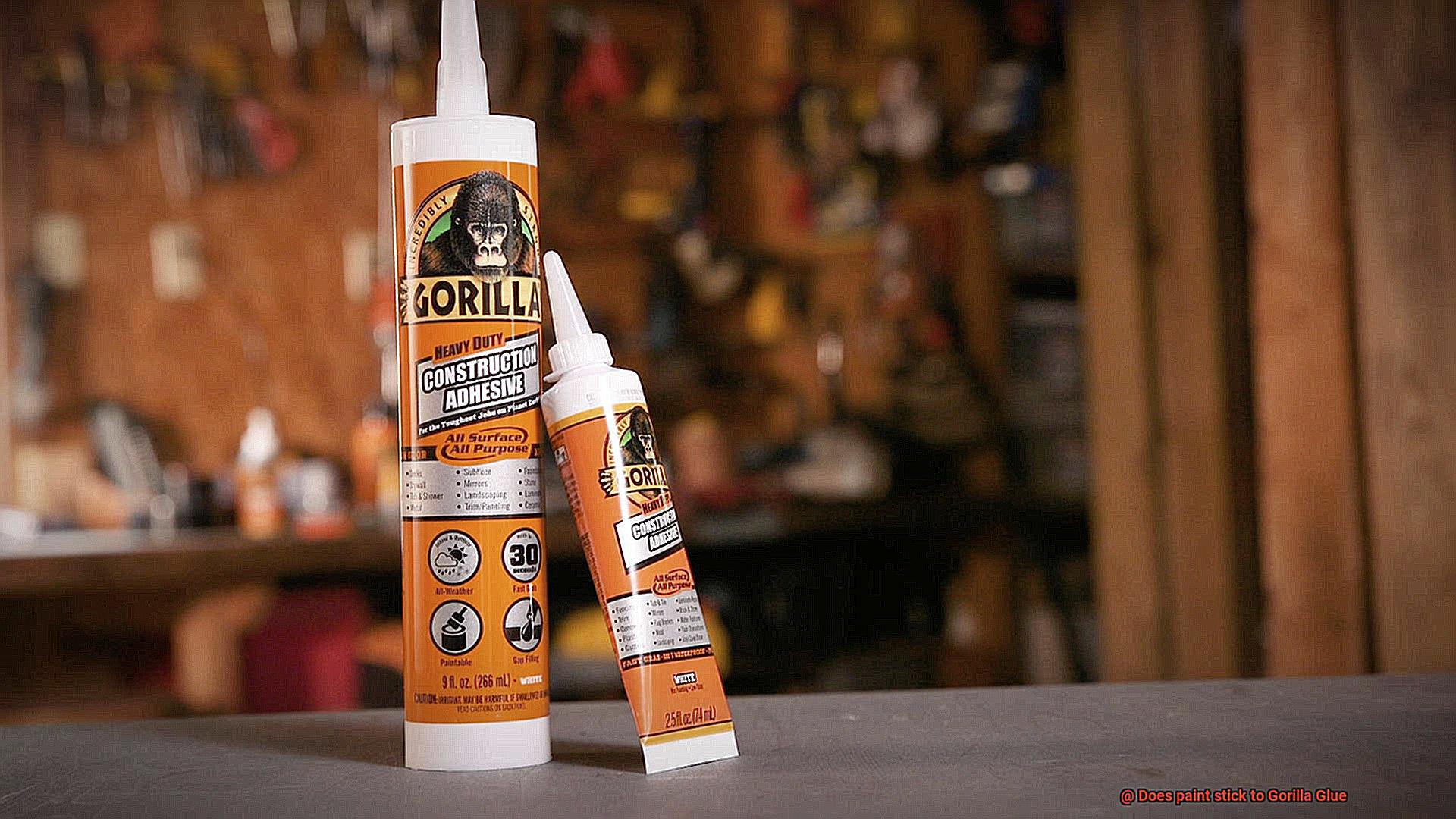
Before you start sanding, make sure the Gorilla Glue is completely dry. Sanding wet glue can cause it to become gummy and clog up sandpaper. Once dry, use a fine-grit sandpaper, like 220 grit. Be sure to use a light touch – sanding too hard or using a coarse grit sandpaper can damage the surface of the glue or create deep scratches that may be visible through the paint.
After sanding, take the time to clean the surface thoroughly. Use a damp cloth or tack cloth to wipe down the surface and remove any dust or debris created from sanding. Allow the surface to dry completely before painting.
In addition to sanding, using a primer specifically designed for use on Gorilla Glue can also help improve adhesion of paint. The primer will help create a more receptive surface for paint and prevent peeling or flaking of paint over time.
Using a Primer Before Painting
Before you dive in, make sure to include a crucial step – using a primer before painting. This essential step will help ensure that your paint adheres correctly to the surface, even if it has been treated with Gorilla Glue.
Why is using a primer with Gorilla Glue so important? Here’s what you need to know:
- Compatibility: To achieve the best possible results, it’s important to choose a primer that is compatible with both the glue and paint you plan to use. Luckily, there are primers specifically designed for use with Gorilla Glue, making it easier for you to achieve optimal results.
- Preparation: Before applying the primer, it’s crucial to clean and prepare the surface being painted. This involves removing any dirt or debris and lightly sanding the surface to create a slightly roughened texture that will help the primer adhere better.
- Application: Once the surface has been prepared, the primer can be applied using a brush or roller. It’s vital to follow proper application techniques and allow sufficient drying time before applying the final coat of paint.
- Long-lasting finish: Using a primer before painting can help ensure that the paint will stick properly to surfaces treated with Gorilla Glue. It creates a smooth, even surface for the paint to adhere to and provides additional protection for the underlying surface.
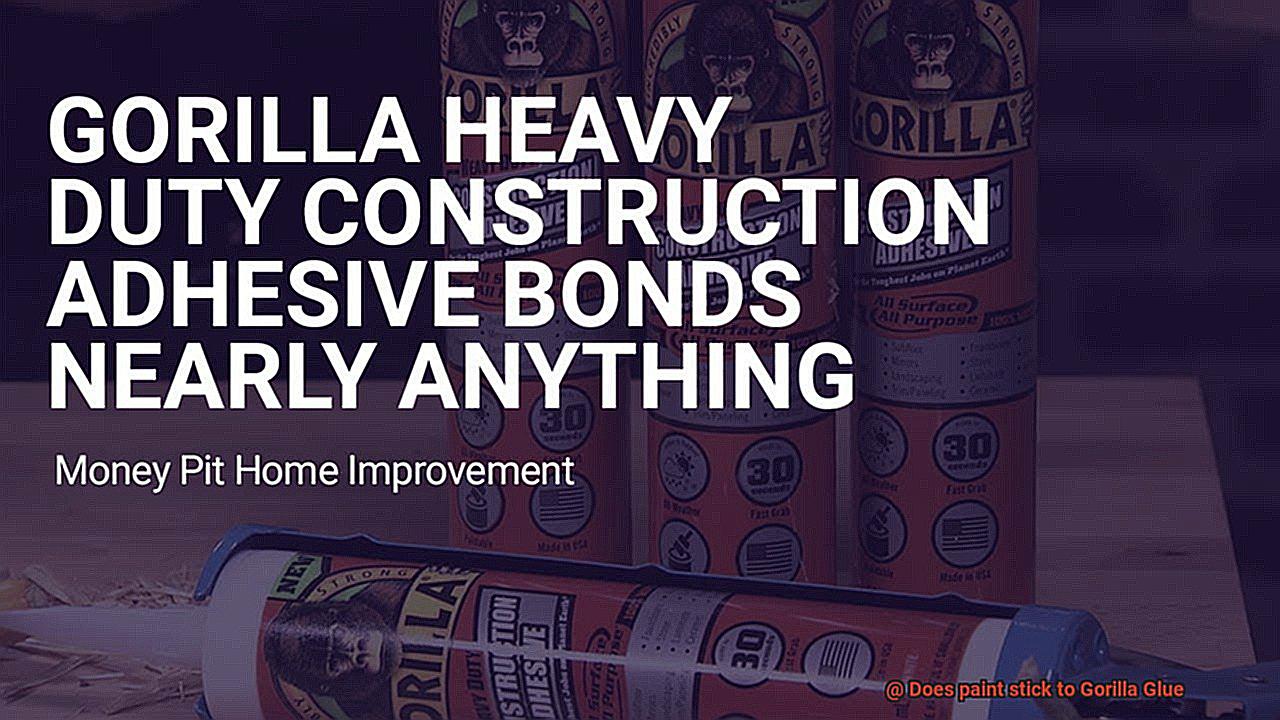
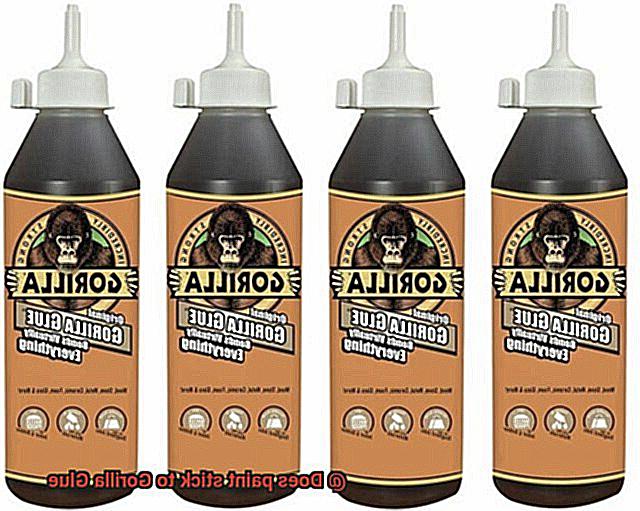
By including a primer before painting, you’ll achieve great results and enjoy a long-lasting finish on your painted surfaces. Don’t forget this important step in your DIY painting project.
Special Type of Paint for Adhesive Surfaces
While it may seem like a daunting task, there are special types of paint that are designed to adhere to adhesive surfaces. In fact, using the right type of paint can lead to a beautiful, long-lasting finish that will make your DIY project shine.
One of the top choices for painting over Gorilla Glue is epoxy paint. This two-part coating is made up of a resin and a hardener, and it is known for its strong bonding abilities. Epoxy paint will adhere well to surfaces that have been glued together with Gorilla Glue, and it provides a durable finish that will last for years. Polyurethane paint is another great option that bonds strongly to surfaces and provides a long-lasting, glossy finish.
Of course, before you apply any type of paint, it’s crucial to ensure that the surface is clean and free of any debris or contaminants. Any residue from the glue should be removed using a solvent like acetone or rubbing alcohol before applying the paint or primer. In addition to these types of paints, there are specialty primers available that are designed specifically for adhesive surfaces. These primers can help ensure that the paint adheres well to the surface and provides a smooth, even finish.
Considerations When Painting Over Gorilla Glue
As an expert on this topic, I’ve compiled some essential considerations to keep in mind when painting over this polyurethane-based adhesive.
Surface preparation is essential when it comes to painting over Gorilla Glue. Make sure the surface is clean, dry, and free of any debris to ensure that the paint adheres correctly. You can use a damp cloth or sandpaper to remove any excess glue residue or rough edges that could affect the paint’s finish.
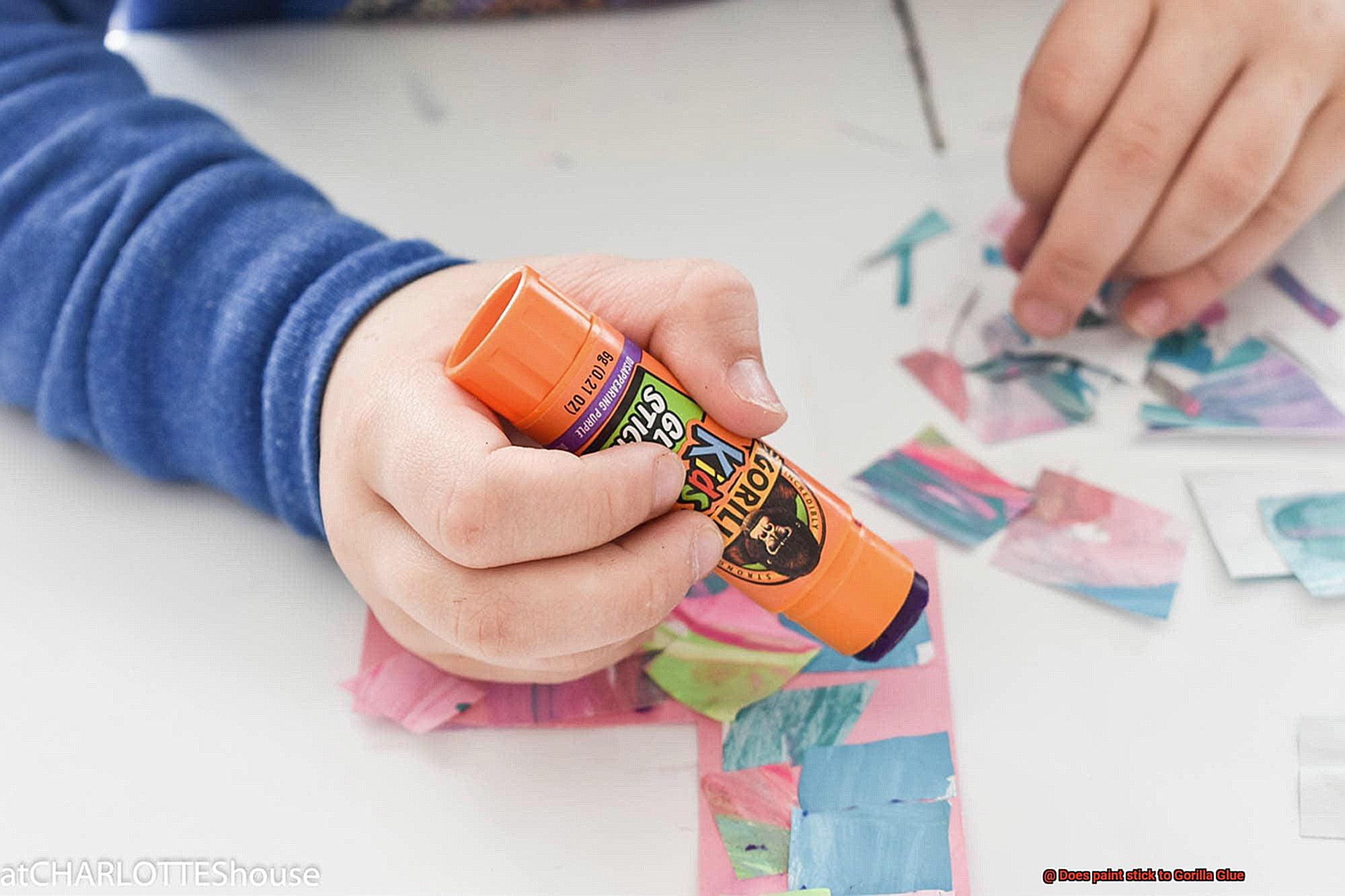
The type of paint you use is another critical factor to consider. Polyurethane-based adhesives like Gorilla Glue are water-resistant, making them difficult to paint over. Some paints may not bond well with Gorilla Glue, resulting in a flaky or peeling finish. To overcome this issue, use a primer or sealer designed specifically for polyurethane surfaces before applying paint.
It’s important to note that Gorilla Glue expands as it dries, creating raised areas on the surface. These areas can be sanded down before painting, but they may still impact the overall finish of your paint job.
Lastly, it’s essential to allow sufficient time for the glue to dry completely before painting over it. Gorilla Glue typically takes around 24 hours to fully cure, so make sure you wait until this time has elapsed before attempting to paint over it.
Steps for Preparing and Painting Over Gorilla Glue
As an expert on the topic, I’m here to guide you through the essential steps for a professional-looking finish.
First, prepare the surface by lightly sanding it with fine-grit sandpaper. This creates a rough surface that allows paint to adhere properly. After sanding, wipe the surface clean with a damp cloth and mild detergent to remove any dust or debris that could hinder adhesion. Allow it to dry completely before moving on to the next step.
Next, apply a primer that is compatible with both Gorilla Glue and the type of paint you plan to use. This helps the paint adhere better and provides a smoother finish. Follow the manufacturer’s instructions for drying time before moving on to painting.
When applying paint, use a high-quality paint that is compatible with Gorilla Glue and the primer you’ve chosen. Multiple thin coats are better than one thick coat, as each layer needs time to dry properly and provide an even finish.
Finally, once the paint has dried completely, consider adding a topcoat for added protection against wear and tear. This will ensure that your new paint job lasts as long as possible.
Tips for Applying Paint to Gorilla Glue Successfully
Gorilla Glue’s strong adhesive properties can make it challenging to get paint to adhere directly to the surface. However, with a few simple tips and tricks, you can achieve a successful painted finish on Gorilla Glue.
Prepare the Surface
Before painting, it’s crucial to ensure that the surface is clean and free of any debris or dust. This can be achieved by wiping the surface down with a damp cloth or using a mild detergent solution. It is also important to allow the surface to dry completely before painting. If the surface is not clean, the paint will not adhere properly.
Use a Non-Porous Primer
Using a primer specifically designed for non-porous surfaces is crucial when painting over Gorilla Glue. The primer creates a barrier between the glue and the paint, allowing the paint to adhere better and providing a more durable finish. Ensure that you choose a high-quality primer that is suitable for both wood and plastic surfaces.

Choose a High-Quality Paint
Choosing a high-quality paint that is suitable for use on non-porous surfaces can help ensure success. Consider using a self-priming or all-in-one paint to simplify the process. The quality of your paint will directly affect the quality of your finish, so don’t skimp on this step.
Apply Thin Coats
When applying the paint, it’s best to use thin layers and allow each layer to fully dry before applying another. This will help prevent drips and ensure an even coat. It may also be necessary to lightly sand the surface between coats to achieve a smooth finish. If you apply thick coats of paint, it will take longer to dry and is more likely to crack or peel over time.
Be Patient
Lastly, it’s important to be patient when painting over Gorilla Glue. Allow plenty of time for each layer to dry completely before applying another. Rushing the process can result in cracks or peeling over time. It’s also important to remember that Gorilla Glue is not designed to be a paintable surface, so you need to take extra care to ensure the paint adheres properly.
Conclusion
In conclusion, painting over Gorilla Glue may seem like a daunting task, but it is definitely achievable with the right techniques and materials. Keep in mind that Gorilla Glue is not meant to be painted over, so proper preparation is crucial for a successful outcome.
To start, sanding the surface of the glue before painting can create a rougher texture that will help the paint adhere better. Using an oil-based paint or primer can also improve adhesion and prevent chipping or peeling. Additionally, using a primer specifically designed for Gorilla Glue can ensure a more receptive surface for paint and prevent flaking or peeling over time.
Choosing high-quality materials and allowing ample drying time between coats are equally important. Applying thin layers of paint instead of one thick coat will allow each layer to dry properly and provide an even finish.
With patience and attention to detail, you can achieve both a strong bond and a stunning finish on your DIY projects.

